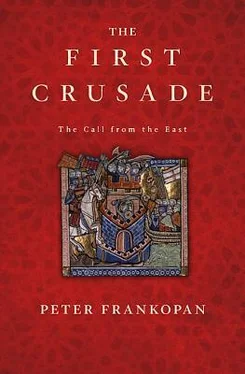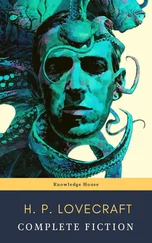The Alexiad gives the impression that nothing came of negotiations. However, the discussions did in fact lead to a concrete agreement in the mid-1080s, as Anna Komnene herself reveals later in the text. Reporting on the emperor’s preparations for a major battle with the Pechenegs, Anna states that among the men sent to his aid were Turks from the east, dispatched by the sultan in accordance with a treaty that had been agreed previously. 56
The outline terms of this treaty can be unscrambled from other passages in the Alexiad . The author reports that her father had the good fortune to woo a Turkish envoy, who defected to Byzantium and handed back to the emperor many towns in Asia Minor in the mid-1080s. Yet the story is too good to be true. It appears what actually happened was that Malik-Shah agreed to expel Turks who had taken control of towns on the coast of Asia Minor and ordered that these locations be restored to Byzantium, with the Turks withdrawing from Sinope on the Black Sea coast, for example, even leaving the town’s treasury behind untouched. 57As a result, all over the region towns were surrendered to Byzantium; this was the result of high-level diplomacy, and not, as Anna Komnene suggests, sleight of hand and cunning on the part of the emperor.
Malik-Shah was well compensated for his crucial help: magnificent gifts were brought to the sultan by Greek envoys in the mid-1080s. 58‘The rulers of Byzantium brought him tribute’, reported an Arabic writer after the sultan’s death, noting that Malik-Shah’s name was renowned ‘from the borders of China to the limits of Syria, and from the remotest lands of Islam in the north to the confines of Yemen’. 59This hints at a clear demarcation of interest: while Asia Minor belonged to the Byzantine sphere of influence, areas further east were subject to the Turkish sultan.
The sultan’s warnings to local emirs in Anatolia were followed up by aggressive action to impose his direct authority over warlords on the periphery of the Turkish world. A major expedition was dispatched deep into Asia Minor against Nicaea and its governor Abu’l-Kasim, whose raids on Byzantine territory had so troubled Alexios. 60MalikShah also set out on campaign in person, marching into the Caucasus before turning south into Syria where he took Aleppo. After Antioch had surrendered to him, the sultan went down to the Mediterranean shore, dismounted and stepped into the sea, plunging his sword three times into the water with the words: ‘Lo, God has allowed me to rule over the lands from the Persian Sea to this sea.’ 61
The sultan’s capture of Antioch was likely the price to pay for his co-operation against Abu’l-Kasim and for the restoration of towns in Asia Minor. It is striking that Malik-Shah was welcomed by the Christian populations in many of the places he passed through at this time who saw his involvement in the region as a prerequisite for stability, acting as a restraint on local Turkish leaders. The sultan met with no resistance in the Caucasus, for example, where the grace and ‘fatherly affection’ with which he treated the local Christians did much to allay fears of what the direct overlordship of Baghdad might entail. 62It helped too that Malik-Shah had a reputation for tolerance towards Christianity: around the start of 1074, soon after he became sultan in succession to his father, for example, he had sent a delegation to Constantinople with detailed enquiries about Christian doctrine, belief and practice. 63In addition, during his campaign of 1086–7 he seemed to one observer to have come to impose his authority over his own subjects, and not over Christians; 64although he entered Edessa and Melitene, he neither installed his own governors nor removed those who were holding the towns on behalf of the emperor. 65
The emperor also took military action in 1086–7, re-establishing his authority over locations in the regions that did not surrender according to the sultan’s instructions. Attacks emanating from Nicaea were brought to a stop following operations against Abu’l-Kasim. ‘The raids were checked’, noted Anna Komnene, ‘and [Abu’l-Kasim] was constrained to seek terms of peace.’ 66Imperial troops were dispatched to recover Kyzikos and Apollonias and other locations in western Asia Minor that had been targeted by local Turkish leaders. 67Kyzikos, which had fallen on the eve of Alexios’ coup, was restored to imperial control around the middle of 1086 and placed under the command of Constantine Humbertopoulos, one of the emperor’s closest supporters, until he was recalled to deal with yet another wave of Pecheneg attacks. 68
Other locations were recovered after the promise of substantial rewards persuaded some Turkish commanders to take service with the emperor and to convert to Christianity. 69The conversions were welcomed by clerics in Constantinople, who praised Alexios for his evangelism and his advancement of the true faith. 70The emperor was happy to take the credit, but rather than being motivated by religious fervour, he was acting in line with classic diplomacy: offering imperial titles and financial rewards to leading Turks was an effective way of showing the benefits of co-operation with Byzantium. They were a small price to pay for recovering towns and regions that had been lost.
Consequently, in a speech by a senior cleric delivered in the presence of the emperor and his closest advisers on 6 January 1088, the Feast of Epiphany, little mention was made of affairs in the east. In contrast to the western provinces which continued to suffer from the ravagings of the Pechenegs, this was no longer a region of major concern. After dwelling on the threat posed by the steppe nomads and commending Alexios on a peace treaty which had been concluded with the nomads shortly beforehand, Theophylact of Ohrid had nothing of note to say about Asia Minor. Alexios, pronounced the cleric, was fortunate to enjoy excellent relations with the Turks and above all with the sultan. Such was Malik-Shah’s admiration for the emperor that he raised a toast in his honour whenever he heard mention of the emperor’s name. Reports of the emperor’s courage and glory, noted Theophylact approvingly, resounded throughout the world. 71
This upbeat assessment of 1088 could not contrast more sharply with the bleak view of the empire’s predicament in 1081 provided by Anna Komnene and long accepted by modern commentators. Stability, not collapse, marked the eastern provinces, even if occasional challenges required decisive action. The situation had been brought under control by the Byzantines – and there would have been no need to appeal to the Pope for help from abroad. In the late 1080s, there was no need for a Crusade.
4
The Collapse of Asia Minor
Apart from Nicaea itself where Abu’l-Kasim still held power, Byzantium retained control of many prime parts of the eastern provinces in the late 1080s, above all the crucial coastal regions, the fertile river valleys and the islands of the Aegean – that is to say the strategically sensitive locations that were critical for the empire’s trade and communication networks. Evidence that many of these areas were thriving under Byzantine control can be found in the intense lobbying of the emperor’s mother by monks on islands such as Leros and Patmos in 1088 and 1089. The monks were planning a considerable building programme and were hoping to secure valuable tax exemptions. 1
The situation soon changed drastically. As we have seen, the threat posed by Pecheneg raids on the western provinces escalated sharply in 1090, with the random attacks of previous years replaced by the migration of the entire tribe deep into Thrace. The resulting pressure provided the perfect opportunity for Turkish warlords in the east to move against Byzantium. Abu’l-Kasim was one who did just that. Around the middle of 1090, he began preparations to attack Nikomedia, an important town north of Nicaea that lay barely fifty miles from Constantinople. 2
Читать дальше











